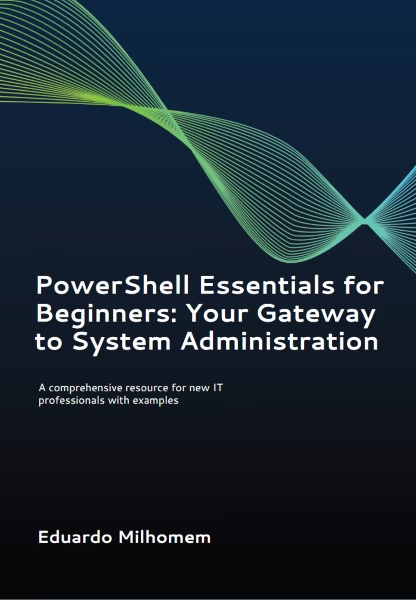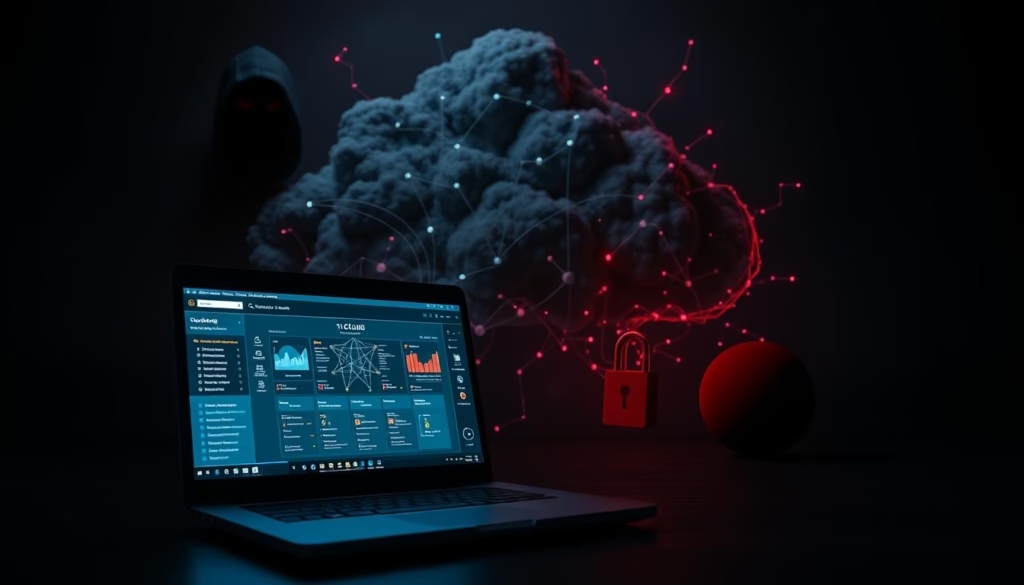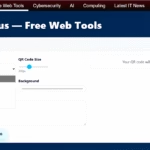I write this guide because work has moved everywhere, and that shift changes how we keep systems safe. Research from the Stanford Institute for Economic Policy Research shows a fivefold rise in people working at least one day a week outside the office, now at 42% of the workforce. That means more endpoints, home routers, and personal devices touching company data.
I will map the main exposures I see: phishing and ransomware, weak passwords, insecure Wi‑Fi, unpatched software, shadow IT, lack of MFA, device theft, VPN and cloud misconfigurations, and tool exploitation. These practices raise real risks when BYOD and casual file sharing mix with sensitive systems.
The urgency is real. A recent report found 86% of business leaders expect geopolitical instability could trigger a major incident within two years. I want this piece to be practical. I will show clear actions—like MFA, encryption, and Zero Trust—that reduce incidents and protect employee access and organizational data.
Main Points
- I explain why distributed work multiplies endpoints and exposure.
- I list common weaknesses that attackers exploit, from phishing to cloud misconfigurations.
- I connect daily habits to measurable risks and organizational impact.
- I preview controls—MFA, encryption, Zero Trust—to prioritize protection.
- I ground recommendations with sourced data to help leaders and employees act.
Why Remote Work in 2025 Raises the Stakes for Security
I see critical systems and sensitive data moving out of corporate data centers and onto home routers and personal devices. This shift expands the attack surface and creates new operational risks that organizations must manage.
Distributed environments, home networks, and expanded attack surfaces
Distributed environments mix business systems with family IoT, default router passwords, and outdated firmware. That mix makes it easier for an attacker to find a weak entry point.
What the data signals: growth of remote work and heightened exposures
The Stanford Institute reports 42% of the workforce now works remotely at least one day per week, a fivefold rise since 2019. That growth translates into more endpoints, more data outside corporate infrastructure, and harder detection of risky emails or anomalous access.
- Visibility gaps: fragmented logs and devices hide early attack activity.
- Common failings: default router settings and unmanaged firmware create avoidable risks.
- Needed guardrails: standardized baselines, automated patching, and strong identity controls.
| Risk | Cause | Impact on organizations | Operational control |
|---|---|---|---|
| Untrusted Wi‑Fi | Default router passwords | Data interception, man-in-the-middle | Encrypted VPN + baseline configs |
| Personal devices | Unpatched firmware | Endpoint compromise, lateral attack | Automated updates + EDR |
| Poor visibility | Fragmented logs | Delayed detection and larger incidents | Centralized logging + UBA |
Top Cybersecurity Threats for Remote Workers in 2025

My review shows social engineering now uses AI to mimic real colleagues and bypass common filters. These tactics make routine messages dangerous and raise the stakes for everyday security.
Phishing and AI-powered social engineering targeting users and emails
AI-enhanced phishing exploits trust signals in messages and collaboration apps. Attackers craft believable emails that trick users into sharing credentials or running malware.
Ransomware and “double extortion” tactics against endpoints and data
Ransomware groups now encrypt devices and export sensitive data to force payment. Even good backups may not stop data leaks or compliance hits for organizations.
Credential theft from weak passwords and lack of multi-factor authentication
Weak or reused passwords without multi-factor authentication make unauthorized access simple. Once inside, attackers escalate privileges and move laterally.
Unsecured Wi‑Fi and man‑in‑the‑middle attacks on public and home networks
Default router settings and outdated firmware let adversaries sniff traffic and inject malicious content. Untrusted networks turn routine logins into exposure.
Shadow IT and unsafe file sharing leading to data leakage
When teams use unmanaged tools, governance gaps appear. Shadow IT and risky sharing create blind spots where data breaches and service disruptions start.
- Practical counters: training, hardened access, and monitored devices reduce these high-frequency attacks.
Unauthorized Access Risks: Credentials, Devices, and Sessions
A lost laptop or a lifted session token can turn a routine workday into an urgent security incident. I focus on the ways stolen credentials and unprotected devices let attackers reach cloud and SaaS systems that hold sensitive data.
Compromised accounts and session hijacking
Credential theft is often the first step to unauthorized access. Once an attacker has a password, they can steal session cookies or tokens over unsecured networks and land directly in business systems.
Session hijacking bypasses login screens and lets adversaries act as legitimate users. I urge organizations to combine MFA with conditional access to block these moves.
Device loss, encryption, and remote wipe
Devices lost in public spaces often contain cached passwords and offline files. Without full-disk encryption a missing laptop exposes local data instantly.
Remote wipe and strict screen-lock policies limit the blast radius. I recommend enforcing encryption and having remote-wipe procedures tested.
“Preventing account takeover starts with strong credentials, MFA, and vigilant session controls.”
| Risk | Cause | Immediate impact | Recommended protection |
|---|---|---|---|
| Credential theft | Weak or reused passwords | Account takeover across systems | Strong passwords + MFA + password managers |
| Session token theft | Unsecured networks, intercepted cookies | Unauthenticated access to SaaS | Encrypted connections + short token lifetimes |
| Device theft | No full-disk encryption or remote wipe | Local data exposure, cached credentials | FDE + remote wipe + screen-lock policies |
To reduce incidents I advise least-privilege access, anomaly detection (impossible travel, odd IPs), and a short protection checklist: full-disk encryption, remote wipe readiness, strong credentials with MFA, and active session management.
Endpoint and BYOD Exposures That Put Organizations at Risk

I often find that breaches begin on a personal laptop or an overlooked IoT gadget on a home network. Remote employees delay updates and run devices without enterprise baselines, which widens the attack surface.
Poor endpoint protection, unpatched software, and outdated firmware
Unpatched operating systems, browsers, and firmware give attackers reliable footholds for malware, ransomware, and privilege escalation. I recommend automatic updates, antivirus/EDR, and full-disk encryption on every device that handles company data.
Personal devices, printers, and IoT expanding the attack surface
Home printers and consumer IoT often ship with default credentials and weak settings. Those items sit on the same networks as work devices and can be pivot points into corporate infrastructure.
- I advise managed baselines and device compliance checks before granting access.
- Segment home networks with guest SSIDs to isolate work devices from consumer gadgets.
- Keep an inventory and enforce BYOD enrollment so employees know required controls.
“Device posture checks and centralized configuration management reduce the chance that a single endpoint infects broader systems.”

Get your Book now with Scripts samples. Limited Edition
Insecure Networks and VPN Misconfigurations
Home internet gear often becomes the weakest link in a company’s protection posture. Default router credentials and old firmware let attackers bypass device-level controls and reach corporate data through everyday devices.
Home router weaknesses and weak Wi‑Fi settings
Default admin passwords, open WPS, and legacy encryption let adversaries join a network with little effort. I tell employees to enable WPA2 or WPA3, change SSIDs and admin logins, and apply firmware updates regularly.
Disable unnecessary services on the router and use a guest SSID to separate personal gadgets from work devices. These simple fixes reduce the chance of malware and phishing payloads reaching work systems.
VPN misconfigurations and untrusted services
VPNs secure data in transit, but misconfigured clients — split tunneling, weak cipher suites, or unmanaged endpoints — can expose sensitive data and widen the attack surface.
I advise using company-approved VPN services with strong authentication and policy-based access. Pair VPNs with device posture checks so only compliant devices gain access to critical apps.
“A vetted VPN and simple router hardening cut a large share of network risks at the edge.”
- Practical fixes: update firmware, enforce WPA2/WPA3, change admin passwords, disable WPS.
- VPN validation: block split tunneling, require modern ciphers, and use managed clients.
- Layered protection: DNS filtering, firewall rules, and endpoint posture checks to limit phishing and malware spread.
| Risk | Cause | Immediate fix |
|---|---|---|
| Router compromise | Default creds, outdated firmware | Change admin login + update firmware |
| Data exposure in transit | Weak VPN config, untrusted VPN | Use vetted VPN with strong auth |
| Phishing & malware spread | No DNS filtering, flat home network | Enable DNS filtering + network segmentation |
Checklist for employees and IT: harden routers, enforce WPA2/WPA3, use company VPN, validate clients, and add DNS filtering. When organizations combine these steps, they raise the cost for an attacker and protect access to sensitive data.
Cloud and Collaboration Tool Vulnerabilities

When cloud storage and chat platforms are misconfigured, sensitive files and meeting records can leak publicly. I focus on common failures that let attackers find open buckets, over‑permissive roles, and exposed links.
Misconfigured storage and excess permissions
Public buckets, open shares, and broad roles cause preventable data breaches that adversaries scan for. I recommend role-based access and just-in-time permissions to keep systems aligned to least privilege.
Collaboration platforms and unsafe meeting settings
Video and chat tools can be abused through weak guest controls, missing meeting passwords, and malicious apps that harvest credentials and files. Enforce defaults: waiting rooms, restricted screen sharing, and link expiration.
- Audit integrations: review bots and third-party apps that access chats, calendars, and files.
- Automate checks: run configuration scans to detect drift across cloud environments.
- Protect links: standardize secure sharing with expirations and watermarking.
“Continuous monitoring and periodic control reviews stop small misconfigs from becoming major breaches.”
Insider Threats and Lack of Visibility
Insider actions often go unnoticed when employees work from home, widening the window for damage. Reduced IT oversight and fragmented logs slow detection and let small issues become major incidents.
Negligent versus malicious insiders
I separate careless behavior from deliberate harm. Negligent users share files improperly or fall for phishing, while malicious actors abuse privileges to steal data.
Gaps in monitoring and delayed detection
Remote networks and staggered schedules create blind spots. I recommend user behavior analytics (UBA) to flag odd file access, off-hour downloads, or strange app use.
Practical steps:
- Tighten access to minimum necessary and review permissions often.
- Correlate endpoint, network, and identity telemetry for rapid detection.
- Train employees to spot social engineering and handle sensitive data.
- Publish response playbooks that balance privacy and incident management.
“Layered visibility shortens dwell time and reduces the damage from insider-driven breaches.”
Emerging 2025 Threats: AI Attacks, Deepfakes, 5G, and Supply Chains
I expect adversaries will use generative models to craft messages and code that change faster than detection rules can follow. This fuels adaptive malware and realistic phishing that iterate in real time.
AI-generated phishing and adaptive malware
AI will let attackers personalize phishing at scale and change payloads mid‑campaign. I recommend pairing human training with AI-assisted analytics to spot subtle anomalies before breaches occur.
Deepfake audio and video fraud
Voice and video impersonation will drive executive fraud and vendor spoofing. Strong verification workflows—call-back protocols and multi-party approvals—reduce the chance of fraudulent disclosures.
5G, devices, and infrastructure exposure
Faster networks increase the number of connected devices and lower latency, which expands the attack surface across networks and cloud services. Device inventory and segmentation are essential defenses.
Supply chain and third‑party compromises
Adversaries will target smaller providers to reach larger organizations. I advise rigorous vendor risk assessments, continuous validation, and tested contingency plans to limit downstream impact.
“AI will power both offense and defense; organizations must invest now in AI‑driven analytics, vendor controls, and stronger verification to stay ahead.”
Proven Controls: Multi-Factor Authentication, Encryption, and Zero Trust
I prioritize measures that make stolen credentials useless and lost devices harmless. In my experience, layered controls reduce successful breaches and keep daily work flowing.
Mandating multi-factor authentication across users, devices, and services
Multi-factor authentication should be a baseline for every account and cloud service. I require it on all user and service logins because it cuts account compromise even when passwords leak.
End-to-end encryption for data in transit and at rest
Encryption protects communications and stored information. I advocate end-to-end encryption for sensitive channels and full‑disk encryption on endpoints to guard lost or stolen devices.
Zero-Trust access with least privilege and micro-segmentation
A Zero‑Trust approach assumes no implicit trust. I validate identity, device posture, and context each time, granting only the minimum access needed.
- I make the case for MFA as a requirement that stops credential-stuffing and many phishing-derived takeovers.
- I recommend strong encryption at rest and in transit, plus automated key management to reduce manual errors.
- I explain micro‑segmentation to limit lateral movement so a single compromise cannot cascade.
Implementation practices I use include conditional access policies, granular role definitions, and periodic audits tied to compliance. These controls map to measurable outcomes: fewer successful logins with stolen credentials, less exposed data, and smaller incident blast radii.
“Zero Trust is a program, not a product; continuous tuning keeps controls aligned with how employees actually work.”
Operationalizing Defense: EDR, SIEM, UBA, DLP, and CaaS
Operational defense depends on tooling that detects and contains incidents before they escalate. I focus on how integrated solutions reduce dwell time and improve incident management across an environment.
Endpoint detection and response for rapid containment
EDR provides continuous endpoint monitoring and fast containment. I use it to stop malware and hands-on attacks on endpoints before they spread to other systems.
SIEM and user behavior analytics for real-time detection
SIEM centralizes telemetry so security teams can correlate events and speed up detection. Paired with UBA, it highlights anomalous user activity—mass downloads or odd app use—that often precedes a breach.
Data loss prevention to control sensitive data flows
DLP enforces policies that stop sensitive data leaving approved channels. That control reduces accidental and deliberate exfiltration that leads to breaches.
Cybersecurity-as-a-Service for scalable expertise and tooling
CaaS delivers managed detection, assessments, and compliance support without a large in-house team. I recommend it to extend coverage, especially for smaller organizations or hybrid cloud environments.
- Tune rules and automate playbooks so tools reinforce one another.
- Align management workflows and assign clear ownership for each tool.
- Measure dwell time, mean time to detect, mean time to respond, and reduction in successful attacks.
“Integrated detection and disciplined management turn alerts into recovery.”

Get your Book now with Scripts samples. Limited Edition
Conclusion
My final view is that layered controls, measured goals, and regular testing turn common gaps into manageable workstreams.
I recommend clear, repeatable best practices: mandate MFA, enforce strong encryption, adopt a Zero Trust approach, and run EDR plus SIEM/UBA and DLP to monitor sensitive activity.
Combine policy, training, and tooling so employees know how to spot phishing in emails and handle data safely. Harden home router and Wi‑Fi settings and use secure remote access to reduce network exposure.
Audit cloud configurations, test incident playbooks, and set measurable targets to cut breaches and improve detection. If organizations operationalize these practices now, they gain practical protection and resilience while keeping day‑to‑day work moving.
FAQ
What are the most common email and messaging scams I should watch for while working from home?
I see phishing and AI-enhanced social engineering as the biggest daily risks. Attackers craft believable messages that mimic coworkers, vendors, or cloud services to steal credentials or deliver malware. I recommend verifying unexpected requests by a secondary channel and using an email client with built-in phishing controls.
How effective is multi-factor authentication (MFA) at preventing account compromise?
MFA dramatically reduces risk by blocking credential replay and many automated attacks. I always require MFA for email, cloud, and VPN access. Still, I advise using hardware tokens or app-based authenticators rather than SMS, and enabling phishing-resistant options where available.
Can using my personal laptop for work increase the chance of a data breach?
Yes. Unmanaged devices often lack endpoint protection, timely patches, and disk encryption. I recommend enrolling any personal device in your company’s device management, installing an approved EDR agent, and enabling full-disk encryption and automatic updates.
Is public Wi‑Fi unsafe, and what should I do when I must use it?
Public Wi‑Fi can expose you to man‑in‑the‑middle attacks and session hijacking. I avoid sensitive tasks on open networks and always use a corporate VPN with strong encryption when I must connect. If a VPN isn’t available, I use my phone’s hotspot instead.
How do I spot and stop shadow IT that could leak company data?
Shadow IT often appears as unsanctioned cloud apps, file-sharing tools, or messaging services. I monitor app usage through CASB or DLP tools, educate teams on approved alternatives, and enforce policies that block risky services to reduce accidental data exposure.
What protections should be in place for cloud services and collaboration platforms?
I mandate least-privilege access, strong MFA, and regular permission reviews. I also enable logging and retention in cloud platforms, use CASB to enforce policies, and apply DLP controls to shared files and chats to prevent unauthorized disclosure.
How do attackers exploit video calls and collaboration tools?
Attackers can join unsecured meetings, share malicious files, or use social engineering during sessions to extract secrets. I secure meetings with passwords, waiting rooms, and host controls, and I restrict file-sharing to approved platforms with scanning enabled.
What role does endpoint detection and response (EDR) play in protecting distributed teams?
EDR provides rapid detection and containment of malware, ransomware, and suspicious behavior on endpoints. I deploy EDR across all corporate and managed BYOD systems so I can investigate incidents, isolate affected devices, and remediate threats quickly.
How should organizations handle device theft or loss by remote employees?
I require device encryption, strong authentication, and remote wipe capability. When a device is reported lost, I immediately revoke access, initiate a wipe if available, and reset any exposed credentials to minimize data loss.
Are deepfakes and AI-driven attacks a real concern for business leaders?
Absolutely. Deepfake audio and video can enable executive impersonation and fraud. I advise verification of high‑value requests through trusted channels, integrating vendor validation steps, and training staff to spot signs of synthetic media.
What steps can employees take to reduce insider risk while working remotely?
I urge clear data-handling policies, role-based access, and frequent awareness training. I also support continuous monitoring through UBA and DLP so unusual data access or exfiltration attempts trigger fast investigation before major damage occurs.
How important is patch management for remote endpoints and home routers?
Patch management is critical. Unpatched OS, firmware, and router software create easy entry points. I push automated updates where possible, require vendors to be current, and encourage employees to change default router credentials and apply firmware updates regularly.
When should an organization consider Cybersecurity-as-a-Service (CaaS)?
If I lack in-house expertise or need scalable, 24/7 monitoring, CaaS is a practical choice. It provides managed SIEM, threat hunting, and incident response without large capital investment, letting me focus internal staff on critical business tasks.
What are the best practices to prevent ransomware and double-extortion scenarios?
I maintain immutable backups, isolate backup networks, and enforce strict access controls. I also use EDR to detect early signs of ransomware behavior, apply least-privilege permissions, and run regular tabletop exercises so response is swift and coordinated.
How can I safely enable bring-your-own-device (BYOD) policies?
I require device registration, installation of a mobile device management (MDM) profile, mandatory security agents, and clear separation of corporate data through containerization. I also define acceptable use and perform periodic compliance checks.
What monitoring tools help detect suspicious activity in distributed environments?
I rely on SIEM, user behavior analytics (UBA), EDR telemetry, and DLP alerts. Correlating signals from these tools provides faster detection of lateral movement, data exfiltration, and compromised accounts across cloud and on-prem systems.
How should employees respond if they suspect their account was compromised?
I tell them to disconnect the device from the network, change passwords from a secure device, enable or reconfigure MFA, and report the incident to IT or security immediately so containment and forensic steps can begin.
Related posts:
 The Role of Quantum Cryptography in Future Cybersecurity
The Role of Quantum Cryptography in Future Cybersecurity
 CISSP Domain 3: Security Architecture and Engineering
CISSP Domain 3: Security Architecture and Engineering
 How to Troubleshoot Common Computer Problems
How to Troubleshoot Common Computer Problems
 Free QR Code Generator Online – Create QR Codes Instantly
Free QR Code Generator Online – Create QR Codes Instantly
 Free and Cheaper IT Books: Unlock Essential Knowledge
Free and Cheaper IT Books: Unlock Essential Knowledge
 Get Started with Microsoft Intune: A Beginner’s Step-by-Step
Get Started with Microsoft Intune: A Beginner’s Step-by-Step



